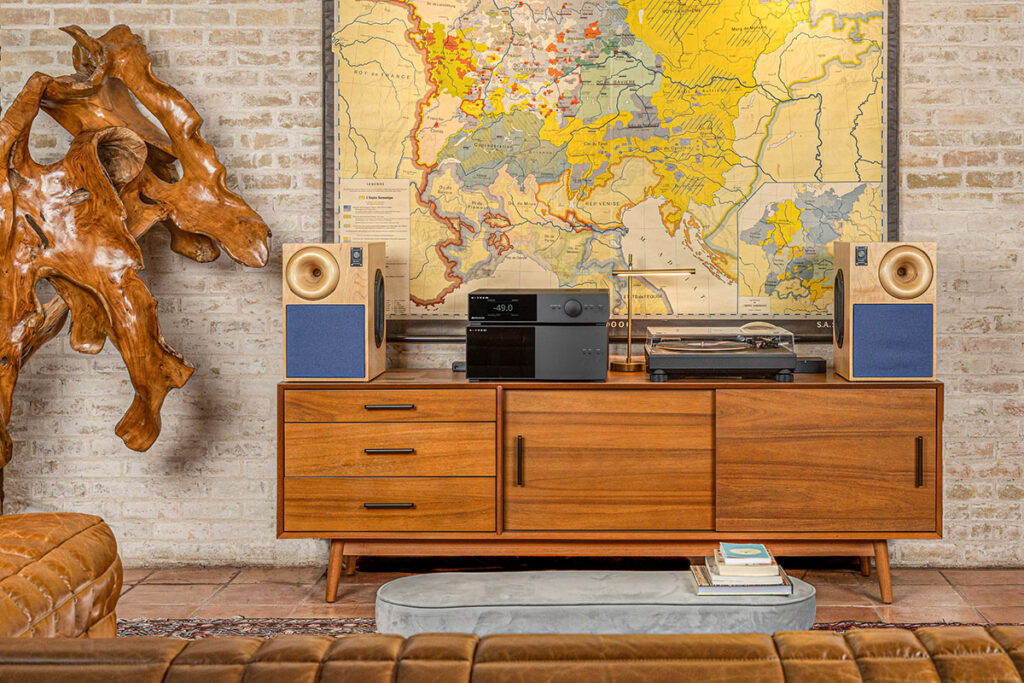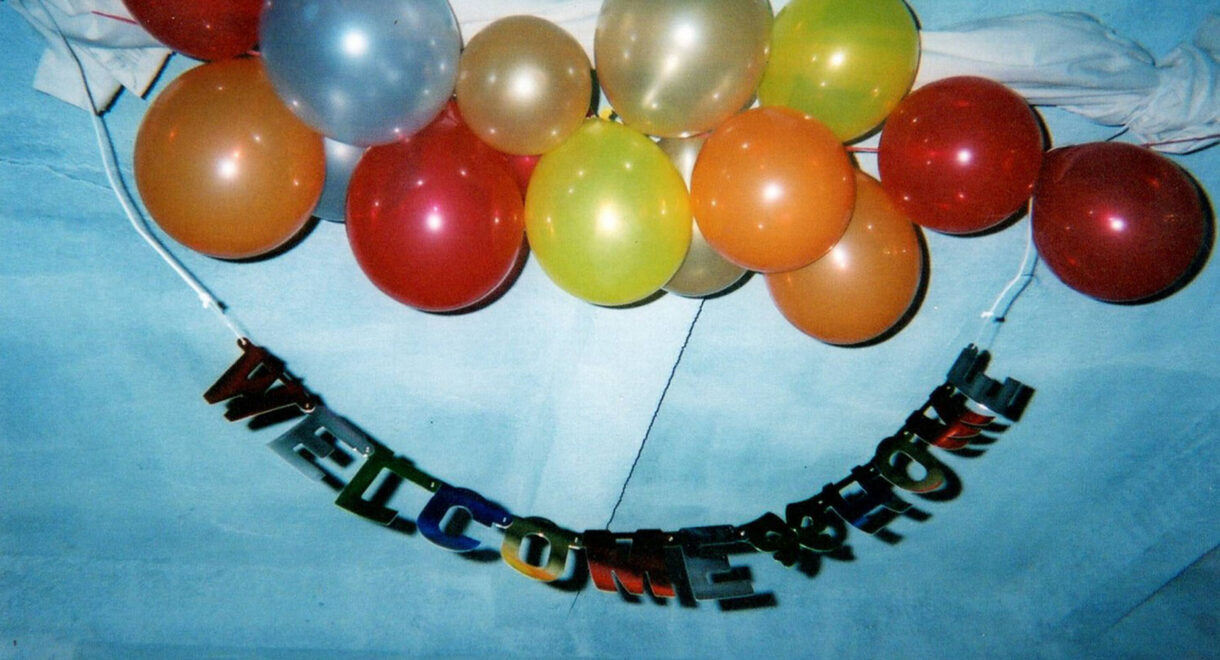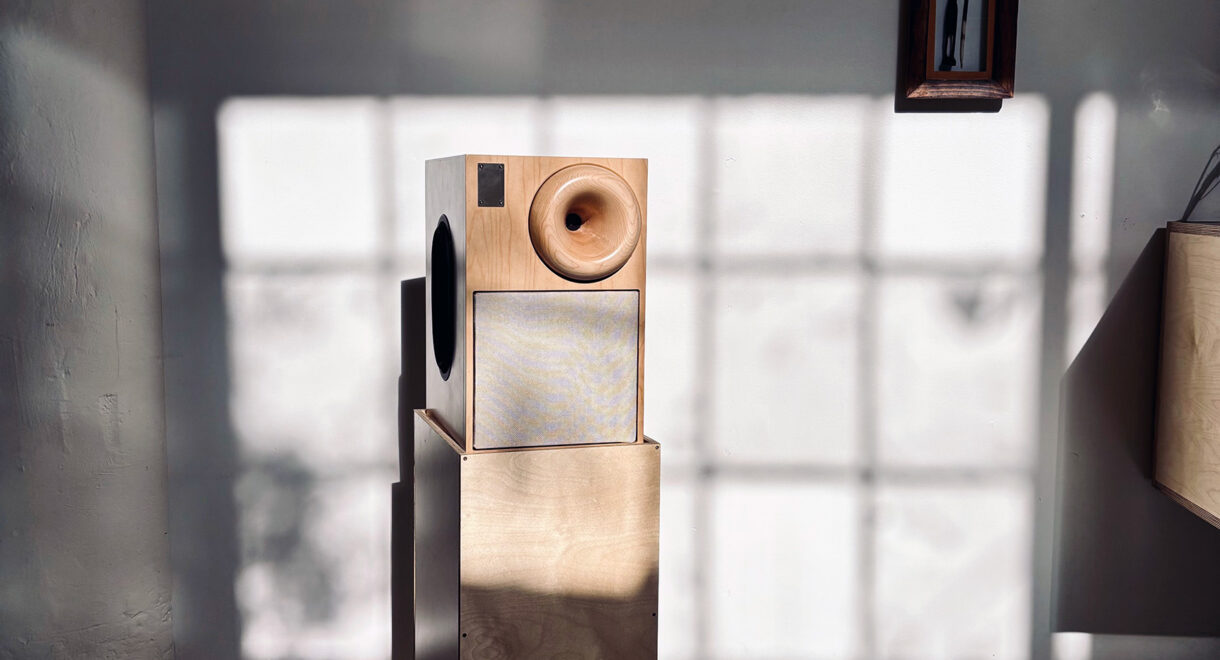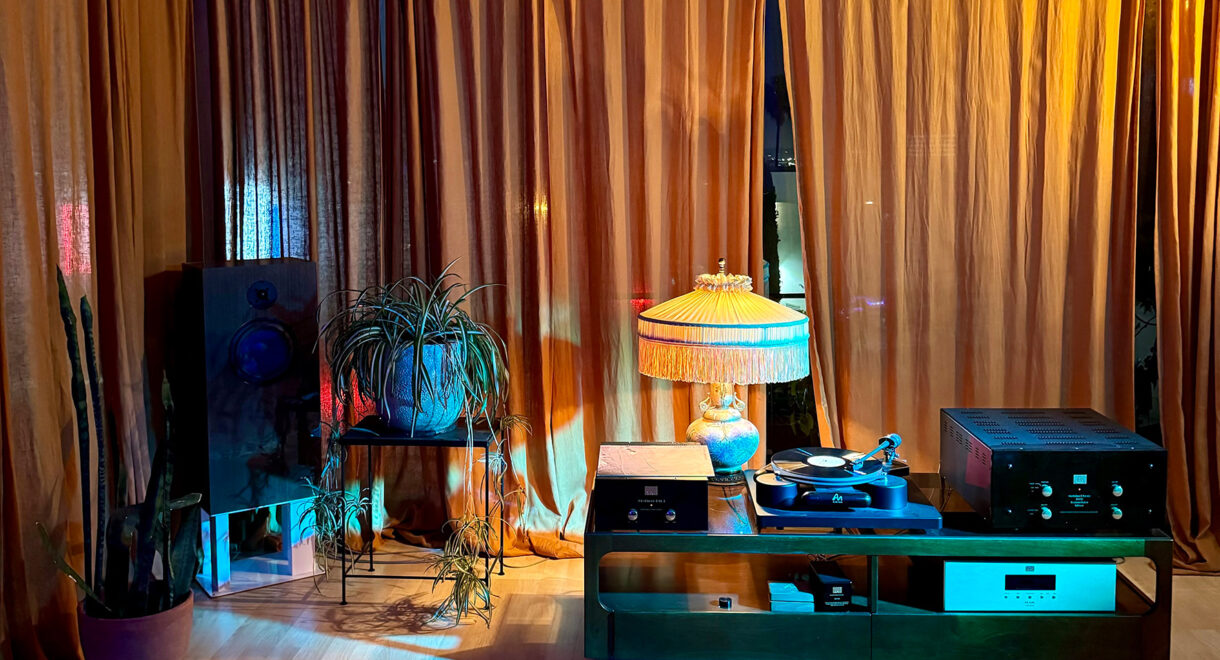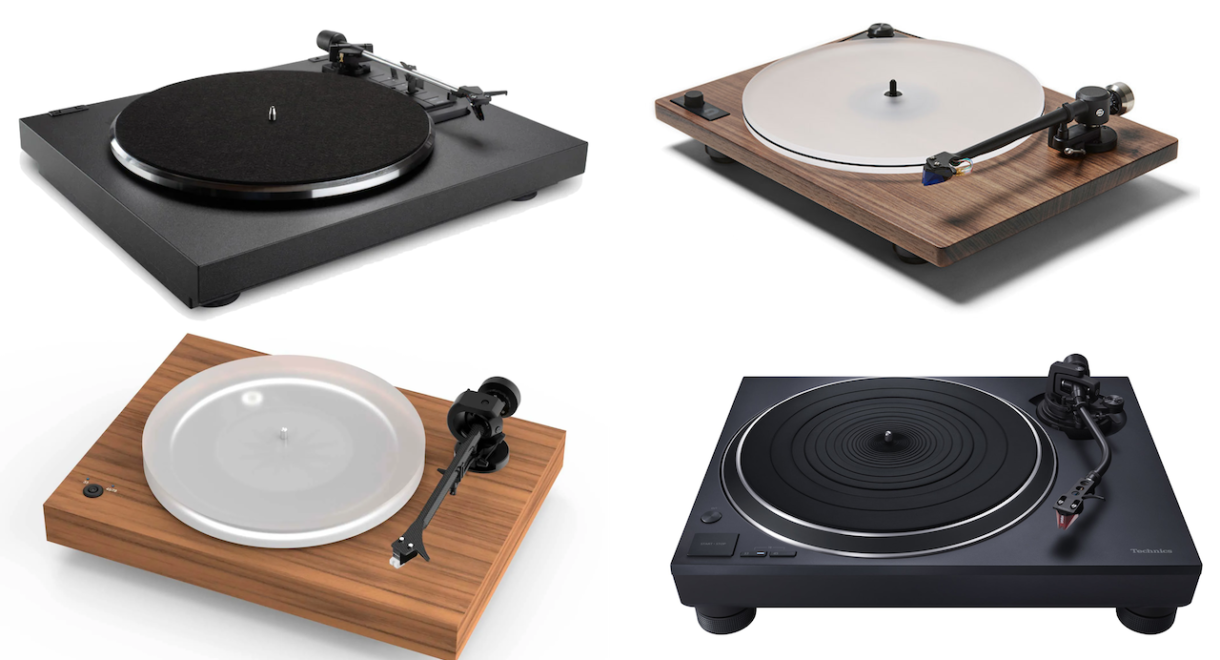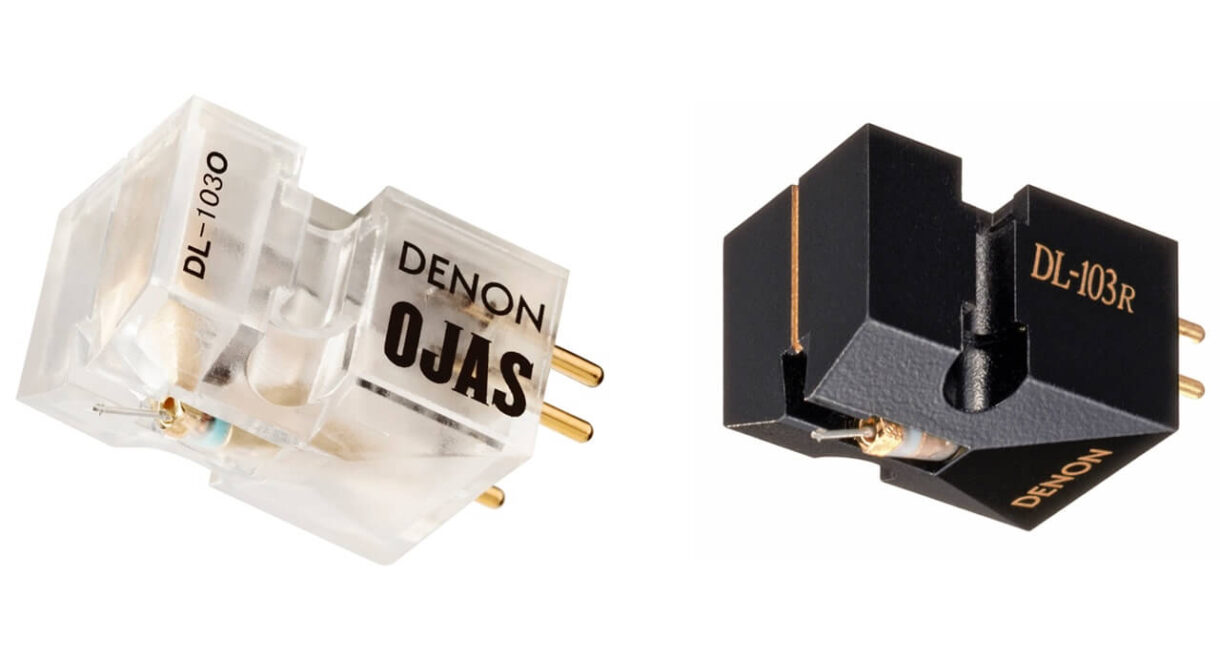Gelareh Khoie shares the story of thirtyninehotel, a legendary nightclub, art gallery, and performance space powered by Klipschorns from David Mancuso’s Prince Street loft parties. Love (Art & […]
Western Acoustics Builds Wooden Active Loudspeakers for the Modern Home

Tana Yonas in conversation with Western Acoustics’ founder Liam Porr.
Hi-fi culture in the United States has long been an obsession of mature audiences with deep pockets and acquired tastes, but the massive interest in hi-fi analog systems over the past few years by younger audiences has undeniably brought new life into the industry. Both millennials and Gen Z are known for their effective knack of “disrupting” social as much as consumer norms, so it’s no surprise that sooner or later that way of thinking would change the way we listen to music.
Western Acoustics out of San Francisco’s Dogpatch district are racing to lead the way and growing so quickly they’re currently actively recruiting to grow their team. I sat down with the founder of Western Acoustics, Liam Porr, to talk about how he chose to set off on this audacious journey, and learn about how he designed and engineered a listening system that effortlessly nests into the lives of listeners.
Tana Yonas: Have you always sought out superior sound, or was exploring HiFi something that you got into later in your life? How has your relationship to sound evolved?
Liam Porr: I think that for me, when I really started getting into audio, it was partially because I love music and I listen to a lot of it. But It’s hard to know what you’re missing out on until you listen to high-quality audio. I also had exposure to people talking about hi-fi systems.
My dad was really into Klipsch speakers. He grew up nearby Hope, Arkansas, where Klipsch is still headquartered and does all their manufacturing still, so he was always a big Klipsch guy. He’d always talk about the Klipsch La Scalas that he had in college that he really loved, and he thought they were the coolest thing ever. I also found out recently that Paul Klipsch’s wife, Valerie, used to teach my grandmother piano lessons, coincidentally.
At some point, I started asking myself, what’s the deal with this? I was just too curious not to try and explore what all these people were talking about. And I was really interested in the technology behind them, because of some of the electrical engineering courses I was taking in college.
TY: What was your first experience with hi-fi, then?
LP: Eventually, I got my hands on a pair of La Scalas that were in disrepair. I really wanted to fix them up and learn how they worked. And the eventual goal was to be able to experience the high-fidelity audio that people always talked about. I looked at it as like an interesting journey working with my hands and trying to see what’s possible and discover what people have been talking about. So, it was less about being dissatisfied with what I had already listened to.
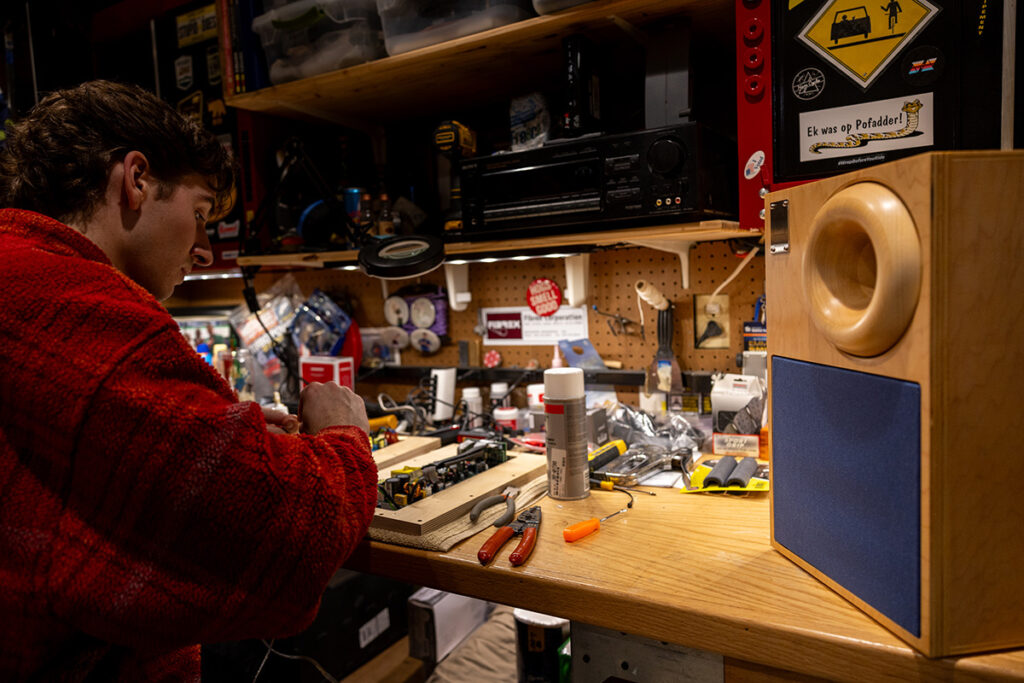
TY: How did you think about the spaces you are designing for?
LP: For Western Acoustics, my head was around realistic living environments. I’m a young guy; I live in a regular apartment with a small living room. And I want to be able to have a music system that integrates well into a room that has a lot of other different purposes. When I went over to this guy’s house to buy from him.
When I bought the La Scalas that I ended up repairing, I had gotten them from an older dude, and they were from his second home. He had this whole separate room for listening, it was literally just the La Scalas, a turntable and his record collection. I was super confused. I didn’t understand listening rooms as a concept. Having a space where you sit down and listen to records every day and dedicate a whole room to it was very foreign to me at the time.
Now I love that concept. I’ve since learned a lot more about that kind of philosophy towards music listening. But for me personally, I don’t have a room to dedicate to that. Realistically, most other people don’t either.
TY: A lot of people rely on Spotify and other digital music services in order to stream music. Oftentimes, it doesn't give listeners the quality of other mediums because of how most streaming platforms compress files. Does it make your job harder?
LP: It definitely makes you rethink things sort of, but compromises are inevitable. In a perfect world, everybody would be listening to either vinyl records or lossless digital files, but this is not how people like to listen to music these days. Even for me, I’ll make playlists on Spotify and get locked into those kinds of platforms.
Hi-fi allows me to listen to music a little bit differently. But sometimes I just want to play my playlist that I have on there, and I don’t want to have to sit down and swap out records for every song. That wouldn’t make sense.
I want to allow for the fact I’m moving around my apartment, like when I’m cooking in the kitchen and stuff like that. I can sacrifice a bit of the bit rate for the convenience of being able to utilize these platforms in the same way I use them to listen to music on my headphones on the go.
To answer your question, it’s not necessarily challenging, but it’s just something to keep in mind to design around. I’m not a purist. I like to think about the best way to integrate music into my life, and not making sure I have the perfect setup for every time I listen to music on my system.
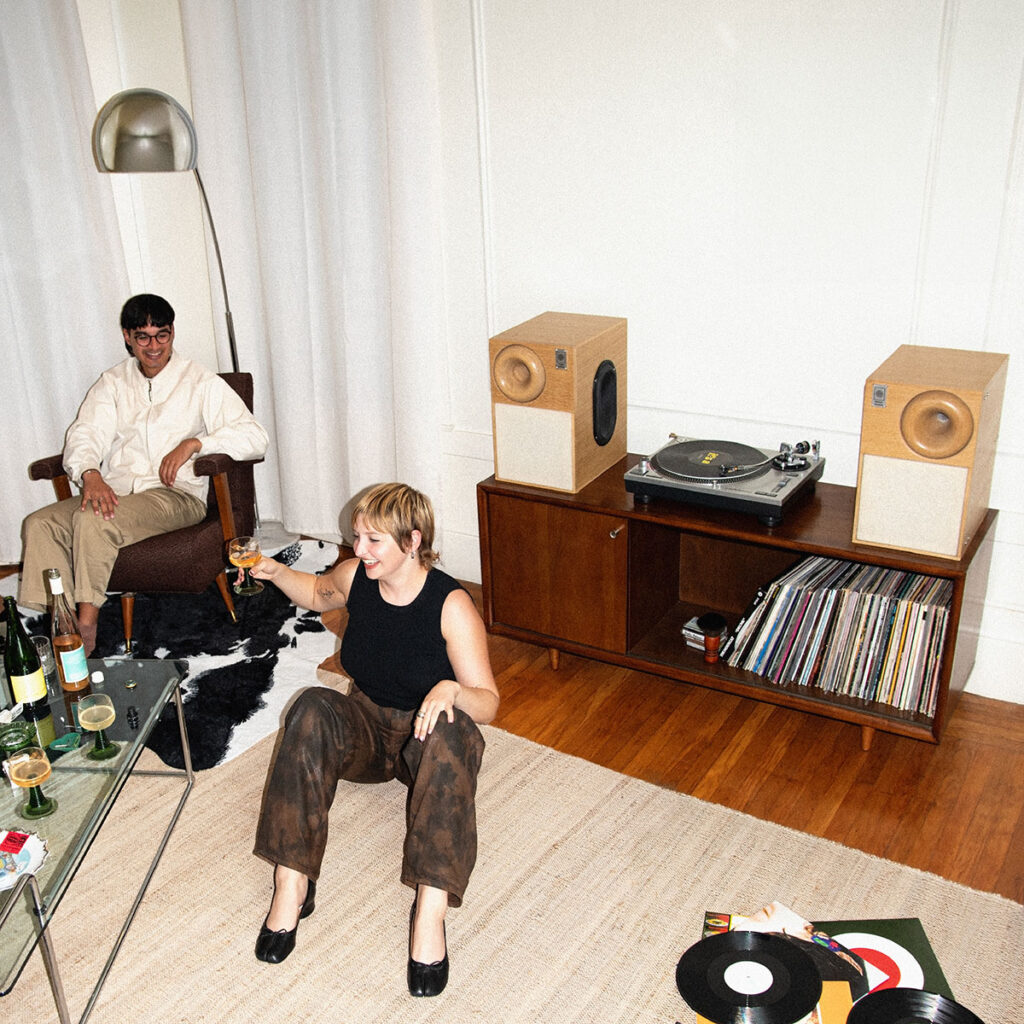
“I definitely designed this product with that kind of person in mind, somebody who cares about both the beauty/lifestyle convenience side of things, and the engineering, the specs, and on…”
TY: It’s interesting that you're in the Bay Area famous for being at the center of new technology and culture. How has that played a part in developing your vision for Western Acoustics?
LP: I’ve worked in tech, and I was a part of that side of the culture here. I do take some of that attitude towards the way that I think about my company, both in terms of the entrepreneurship side of it, and then also just like the way that I think about products that we’re going to produce. The prevailing attitude of people here is very focused on science and engineering and because of that, people are a lot more critical of the quality of the components that you’re using, the specifications, measurements, and stuff like that are things that really matter to people. These are smart people, and so it’s really hard to hide behind marketing. You have to have something that’s really good on paper, and in person. On top of that, there’s a lot of people here who want to have something that’s beautiful as well as being high quality.
I definitely designed this product with that kind of person in mind, somebody who cares about both the beauty/lifestyle convenience side of things, and the engineering, the specs, and on in addition to all these things; they have an engineer’s mindset to audio.
TY: Were you developing this product during the pandemic, when it was really hard to get components because of the global supply chain failures? Are you able to get the components that you want and trust that you'll be able to get them next year from now, for instance?
LP: It’s not easy, but there are some domestic suppliers that are really good. Madisound is a great one. They’re the classic, you know, Parts Express is one everybody knows, but they’re not known as much for supplying the highest quality components. They have a lot of great stuff, all basic things that you would need.
But if you’re looking for really high quality hi-fi transducers, and things like that, you would go to a company like Madisound. For small quantities of stuff, they have most of what you would need, so thankfully I haven’t had too many issues in the process of R&D.
But when it comes to actual production runs, which we’ve only just started, we didn’t have to deal with much of the issues everyone had during the pandemic. There’s still remnants that we have to deal with. We get our woofers from a company in Denmark, and they have a long lead time because of the materials that they have to gather and because of the supply chain chokes that are still in effect.
It can be difficult; we have a long lead time for things. But so far, we haven’t had some of the disastrous supply chain issues you hear about. We just have to plan ahead.
YY: What products do you have available now?
LP: We have two speaker options right now, the Type 2 speaker and the Type 1.
The Type 2 speaker is the one that’s a bit more accessible. It’s a small bookshelf size speaker that’s about 16.5” tall by 10.5” wide. It’s meant to be more like a relatively near-field listening speaker system that works well really in smaller rooms and ultimately sounds good in the home in general.
Then we have the Type 1 system which is a much larger format speaker system, but it’s still meant to not be too intrusive in the home. It doesn’t have a very striking aesthetic to it. It’s meant to be a bit more subtle, laid back, almost like a pair of cabinets that you have in your home. The Type 1 in particular is meant to be the flagship hi-fi system. It utilizes Japanese woofers, and it tries to get deep bass without sacrificing on transients. The woofers from Fostex in Japan are meant to produce a deep bass response into the 30 hertz range while still having a very, very sharp, fast response. You can play music like jazz or things along those lines without muddying up the sound.
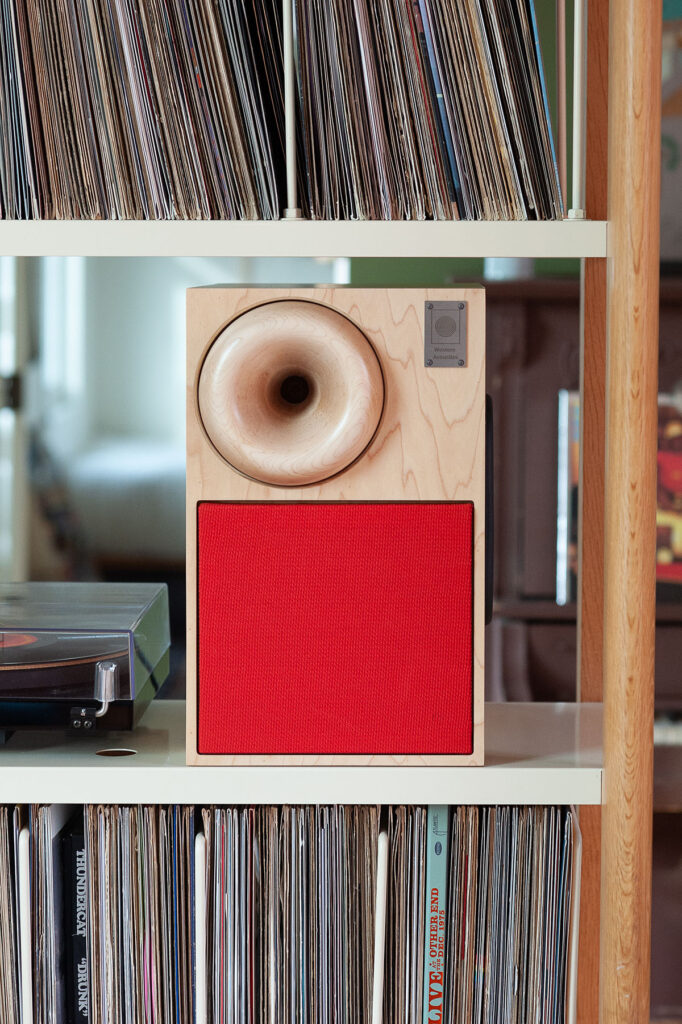
TY: And as far as designers or design movements that have inspired the kind of look of your speakers, who and what has inspired you?
LP: I think the classic one that people tend to mention and I feel similarity about is the work of Dieter Rams. I love the work that he does and I’m very inspired by him. I wouldn’t say it totally encapsulates what we do, but I do really take a lot of appreciation for not over designing. It’s important to ask the amount that you need to have a part of an object, you know? What are the essential components?
I also really enjoy the international typographic style. I like that approach to graphic design, and the emphasis on readability and legibility. And their inspiration from the Bauhaus movement and just how different that was at the time from everything else. I like to ask, how can we reduce the design of something to the things that matter the most? And then how to visualize those things to people. Those are the things that I kind of think about when I think about my speakers.
For form and shape, I really love Brancusi and his sculptural work. I just think it’s what he makes is beautiful, and I love his reduction of things to their essential forms. Using only a few different kinds of shapes, and then using those in combination with each other to make very different effects while still retaining simplicity. You can see a similarity to that in our type 2 speaker with the rounded horn on a very square baffle and shape. So I’m very inspired by his work as well.
I’m obviously very inspired by Devon Turnbull and Ojas audio gear, mostly in terms of just how he reconceptualized what hi-fi can be to somebody in their life and what a hi-fi system can do. When you take it to the extreme like he has, it can be like a personal odyssey, and defining your own temple, which I think is not only fascinating but it’s also very unique. I’ve never seen anybody do it like that, and he’s sort of defining his own category in terms of what speakers can look like.
TY: I also really appreciate how wood is a very present material in your pieces as well, and the woodworking is really beautiful. Was that something that was important to have a natural form in the design?
LP: Yeah, the inclusion of wood is a really important part of our audio system, and I think that the inspiration for that is using humble materials. Materials that are very accessible for people that aren’t too out there. With some of the really high-end audio, I think you could get your Wilson speaker color matched with a Rolls Royce. I mean there’s a certain person that appeals to. And Wilsons are the top of the line, they have incredible technology… but I think that your speakers don’t have to have an auto body finish, and in most homes they shouldn’t. I think that the natural tone of wood, and just that sort of feeling that it evokes, makes it feel more approachable in my mind, and I think I want to even take it further. Right now we use CNC machines, and classical cabinetry techniques to assemble these speakers, but I want to even potentially lean more into wood craftsmanship, and make things feel a little bit more like they were touched by a human’s hand.
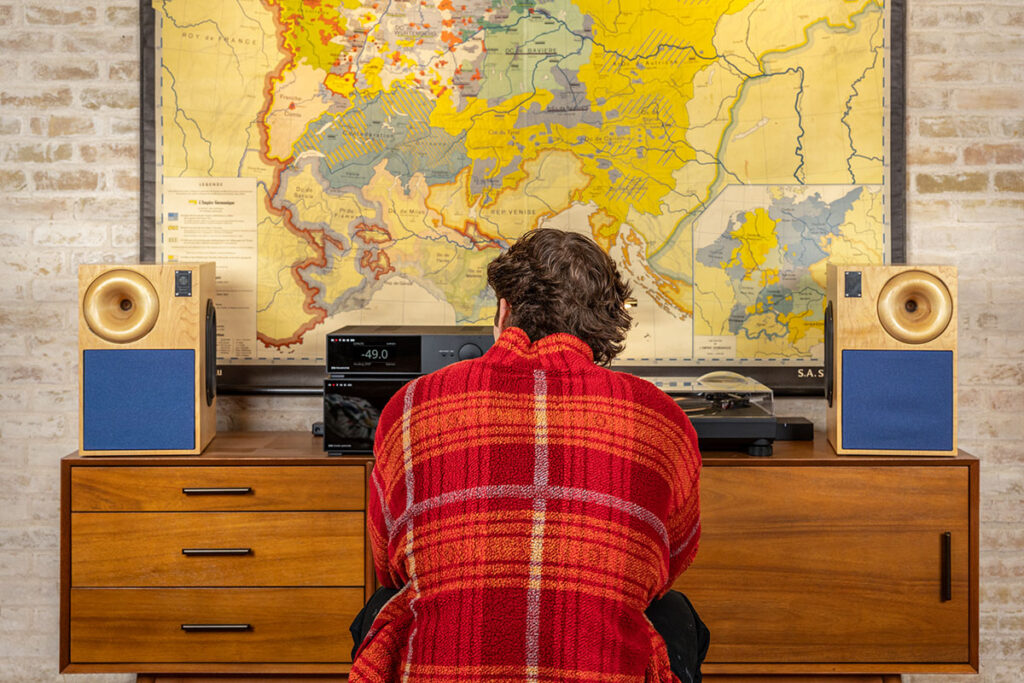
“I love vintage speakers, but I think that a lot of them don’t really fit in a modern home with more avant-garde interior design. I felt like there was room for something different.”
TY: That reminds me of just the overall kind of collective nostalgia that's really made analog culture popular. Why do you think it's become such an important part of popular culture these days, especially since the pandemic?
LP: Analog systems are really interesting and unique, and I really appreciate the romance of an analog system. I think that during the pandemic, I was in the same boat. Analog systems have so much culture and history and story behind them. Especially when we were really starved of that human connection. During the pandemic, suddenly you can build a different kind of relationship to the music you’ve loved all your life by integrating it into a system the music was designed to be listened to. I think that sort of thing is very unique, and it just forms a stronger bond and meaning for the music that you listen to when you do it on an analog system like that. Obviously, I think there’s a lot of ways that we can develop beyond old school analog, but I still think that a lot of the technology that we developed back then is still the best, and there’s no reason to change it if it’s not, you know, broken.
TY: Your products obviously have a lot of integrity. When you were building the company’s products and the overall brand, did you have an exact idea of what you wanted to build from day one or did it evolve during time? What were the priorities for Western Acoustics?
LP: When I first started out I would not have been able to articulate it in the way that I’m able to talk to you about it right now for sure. I was just going off of my feelings of what I felt like an audio system should be, so it was all very emotionally and intuitively driven.
I love vintage speakers, but I think that a lot of them don’t really fit in a modern home with more avant-garde interior design. I felt like there was room for something different. In addition to that, we have this different approach to listening to music in our daily lives. We’ve seen how the convenience of listening to music on our phones and headphones is just becoming more and more integrated and more easy to use. I feel like speaker systems and hi-fi systems specifically haven’t evolved to the same level of convenience, and I think that could use some reinterpretation. In a lot of ways, I was just designing a speaker system for myself when I did this, and I wanted to have a speaker system that fit into my home while also sounding beautiful and also being easy to use. Beauty and convenience that’s weighed just as highly as the audio quality
TY: Is your perspective being received well from others in the HiFi speaker industry at places like trade shows?
LP: The people who have been the most vocal about us have been people in the design world, certainly. I’ve been talking with a lot of interior design studios and even architects that have been very interested in the work that we’re doing at Western Acoustics.
I feel like the audio world just needs more time to form an opinion about a particular company, and we’re very young. We only launched our first product in November, and so that side of it will take a lot of time. Obviously, with the design aspect, it’s a lot easier to spread the visual pictures of the thing than it is to get more people to sit down and listen to them. So I think that’s part of why we received so much feedback from the design world first.
TY: Is there a genre of music that sounds best on your speakers? Or did you kind of optimize them for a certain sound?
LP: You know, in a lot of ways I look at this as another step after vintage audio, in terms of the culture around music. The current world of hi-fi has been very centered around expensive, sometimes difficult-to-use products. The vintage audio world has a lot more unique culture around it. I’m looking at this speaker system as an iteration upon that scene, so I thought about the ways that we can improve upon vintage audio without losing the soul of vintage audio. I felt like one of the main trade-offs of a vintage system typically is there’s a lot of lack in bass response.
That’s just simply because, music back in the ‘70s, ‘80s and early ‘90s didn’t have as much of an emphasis on low-end bass like modern music does. That’s just a reprioritization of the kinds of music that people are listening to these days, so I did try to make sure that the speaker systems that we developed had a very strong bass response.
Electronic music can have the kind of complexity and beauty of something like jazz or classical music while still having a sound signature that is reminiscent of modern rap, R&B, hip-hop – that sort of thing sounds great. There’s room-filling bass on the low-end for a lot of these kinds of tracks, especially in some of these ambient tracks that play some bass notes for a long period. It’ll just fill your room with like this 35, 40 hertz wave. I really love the way that that feels, so I listen to a lot of music like that.
TY: Are there favorite records that you like to play on your system?
LP: There’s a handful of records that I go to a lot. I listen to a lot of cool jazz, especially Bill Evans’ Trio. Their record Waltz for Debby is one of my favorite jazz albums in the world and any of the stuff that they recorded at the Village Vanguard is honestly just fantastic. It fills the room with sound, especially with the Type 1’s. It really feels like it’s being played live right there in front of you.
On the more electronica side, I really like Sakura by Susumu Yokota. That’s a slightly more ambient electronic album and it’s very beautiful. I like to listen to that one a lot, and another one similar to that, recommended by Devon Turnbull, called Space 1.8 by Nala Sinephro. That album is also really, really beautiful. That one particularly shows how you can play really complex, transient music while having a deep, filling bass response.
On the other end in electronica, there’s this album called Everyday by Tourist, a British musician. Again, I think he’s on the same level as Sakura, but a little bit more dancey, I guess, in its taste. Then there’s Beauty by Ryuichi Sakamoto. That one has a little bit more groove and I like the deepness of that music.
TY: What's next for you? Do you have your eyes on the next frontier?
LP: Yeah, we’re going to keep building speakers, for sure. I’m looking to build something that’s a bit more accessible in the price range for people. That’s something I’m trying to work on developing this year, since the price point’s pretty high still for the speakers. That’s just the reality of building something high-quality in small batches.
In addition to that, my eyes are set on room treatment. I’m working on room treatment stuff because I really think that, when we talk about engineering a sound system to sound as good as it possibly can, there’s a lot of gains left on the table with room treatment.
Nobody touches it, and nobody understands it. I think there’s a lot of room for improvement with the way that typical hi-fi home systems are set up.
Western Acoustics currently manufactures two different models from their space in SF, and you can follow them on Instagram to stay updated about their activities and new products.
